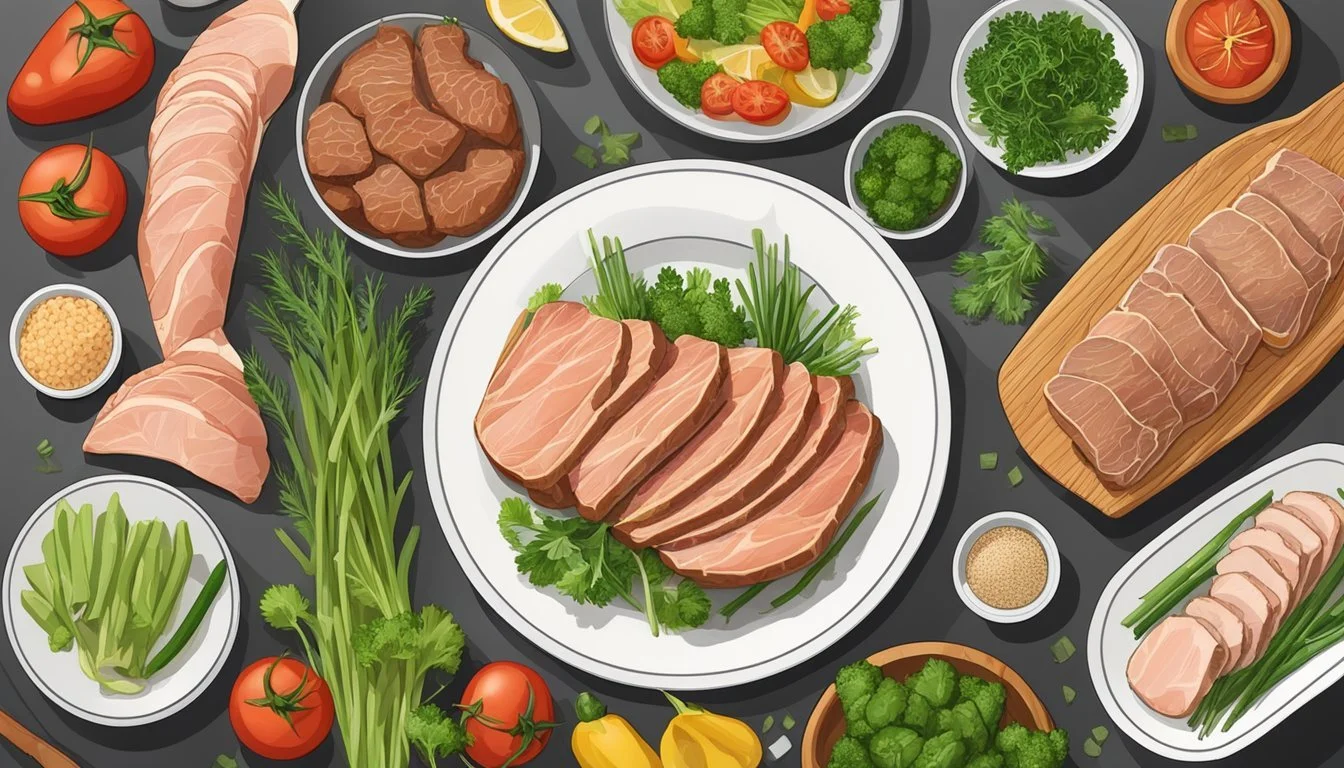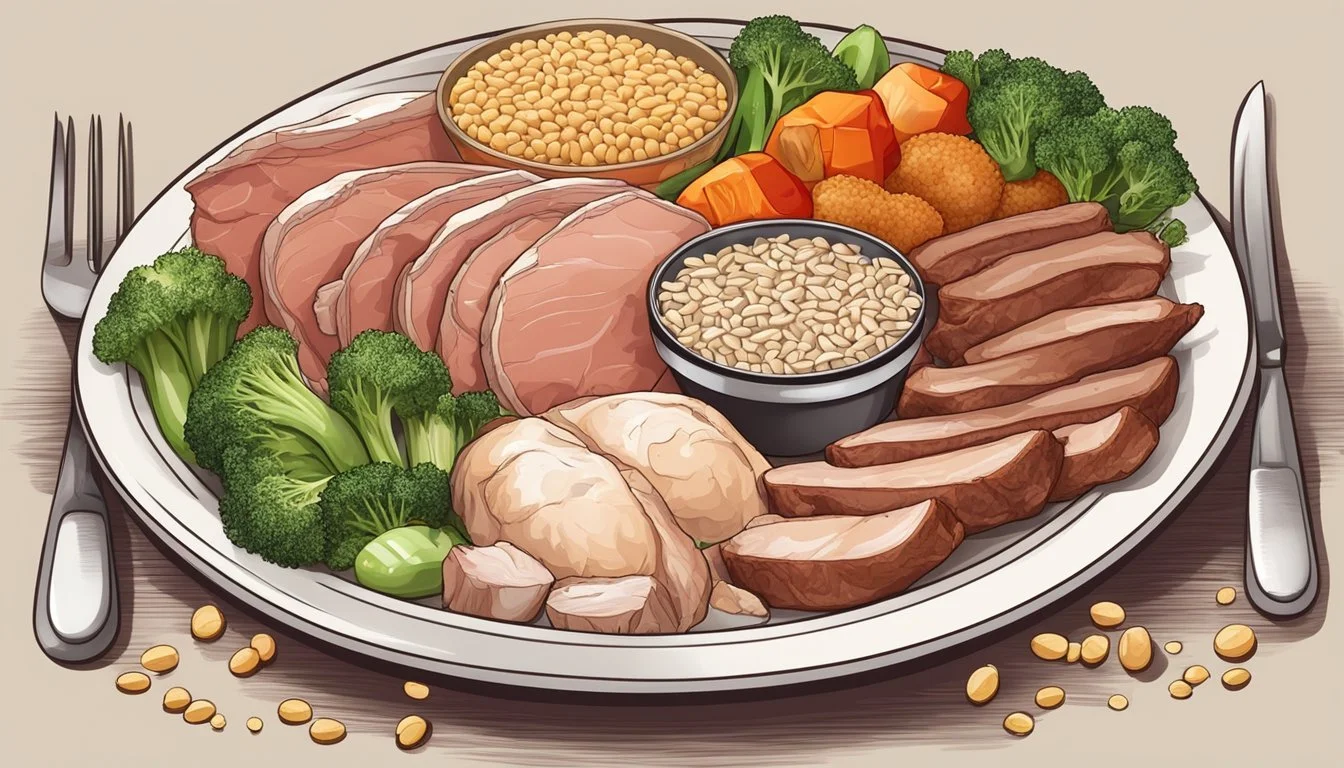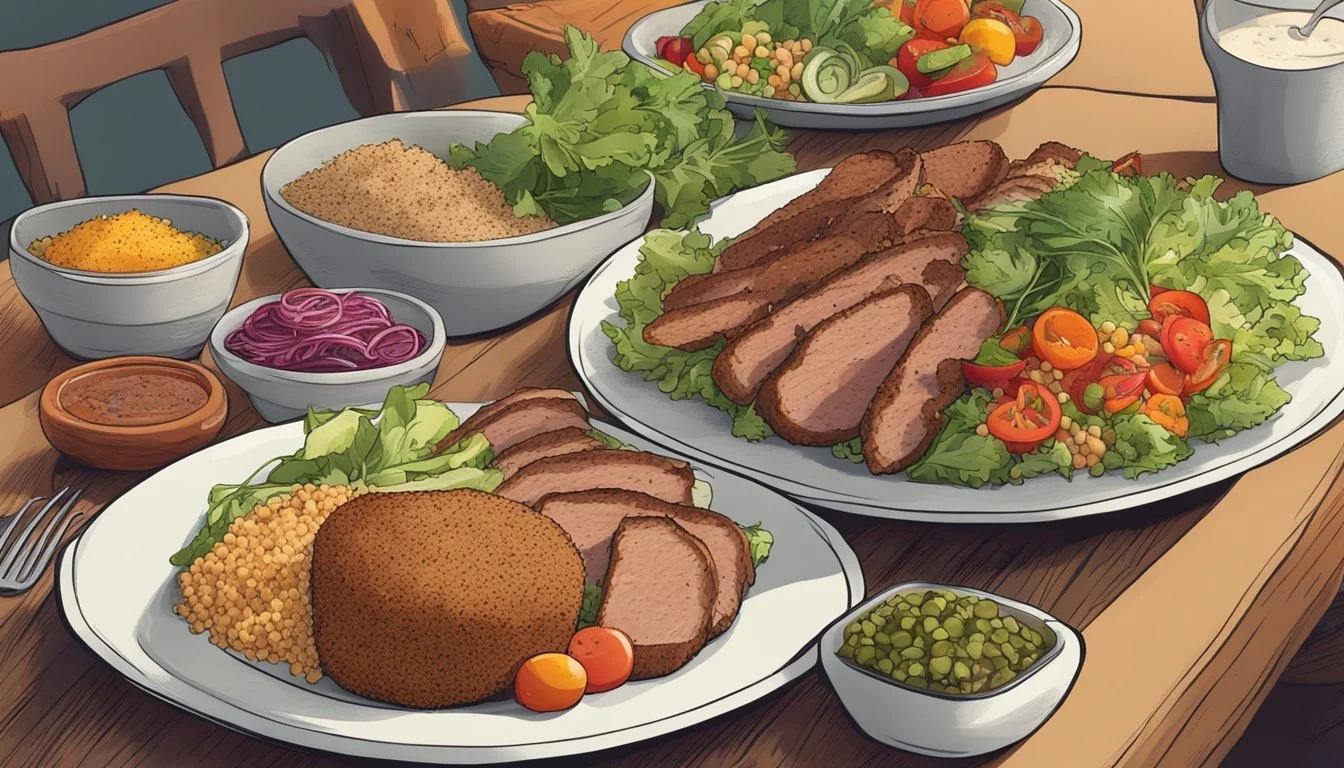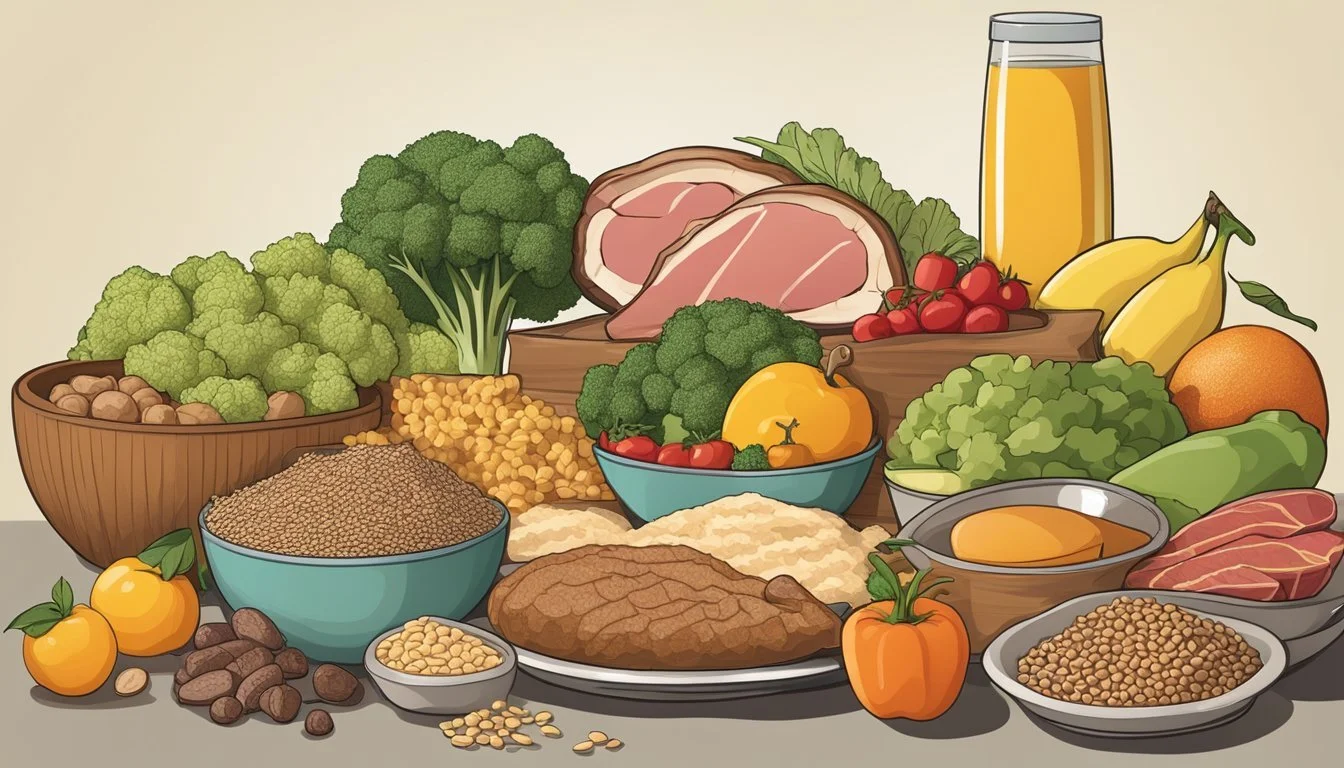Carnivore Diet vs. Gluten-Free
Evaluating Health Benefits and Challenges
The Carnivore Diet and Gluten-Free Diet both tailor the plate to exclude certain food groups, yet they arise from different nutritional perspectives. The Carnivore Diet, as the name suggests, focuses on animal-based foods. Proponents consume primarily meat, and may include other animal products such as dairy and eggs. It omits not only gluten-containing grains but all plant-based foods, positioning it at the far end of dietary restriction.
On the other hand, the Gluten-Free Diet eliminates only gluten, a protein found in wheat, barley, and rye. This diet caters to individuals with gluten intolerance or celiac disease, who must avoid gluten to prevent adverse health reactions. Unlike the Carnivore Diet, gluten-free allows for a broad range of foods, including fruits, vegetables, and grains that do not contain gluten.
Comparing these diets highlights the nuances in dietary interventions and their implications for health. While both diets remove gluten naturally, their overall nutritional profiles differ greatly. As more individuals consider dietary changes for health or personal reasons, understanding these differences becomes crucial in making informed decisions that align with their health goals and lifestyle preferences.
Understanding the Carnivore and Gluten-Free Diets
In contrasting the carnivore diet with the gluten-free diet, the central themes revolve around the types of foods consumed and the elimination of specific food groups to address health concerns such as gluten sensitivity and autoimmune diseases.
What is a Carnivore Diet?
The carnivore diet is characterized by an exclusive focus on animal-based foods. It includes a variety of meat, such as beef, pork, and lamb; poultry; fish; and other animal products like eggs and certain types of dairy. Proponents consume these protein-rich foods, often avoiding all plants and opting for a zero-carbohydrate intake. This diet is sometimes sought by individuals looking to eliminate plant-based foods which they believe cause them health issues.
Defining the Gluten-Free Diet
A gluten-free diet necessitates avoiding all foods that contain gluten, a protein found in wheat, barley, and rye. This diet is essential for those with celiac disease, an autoimmune disorder where gluten ingestion leads to intestinal damage, and for those with non-celiac gluten sensitivity. Gluten-free diets often incorporate a variety of gluten-free products made from alternative grains or substitutes to ensure nutritional adequacy and variety in the diet. For example:
Grains: Rice, corn, quinoa, and buckwheat
Gluten-free products: Pasta, bread, and snacks made from gluten-free flours
While the primary goal is the elimination of gluten for health reasons, the diet is diverse and can include all food groups except for gluten-containing grains.
Health Implications
The carnivore and gluten-free diets differ significantly in their nutritional profiles, which can lead to varying health implications. This section explores how each diet affects nutrient absorption and deficiencies, impacts digestive health, and presents potential risks and benefits.
Nutrient Absorption and Deficiencies
A gluten-free diet often excludes whole grains, which are a principal source of B vitamins, fiber, and various minerals like iron, calcium, magnesium, and zinc. While this diet is essential for those with celiac disease or non-celiac gluten sensitivity, others may inadvertently reduce their nutrient intake, leading to deficiencies if not properly managed.
In contrast, the carnivore diet, focused solely on animal products, can provide ample amounts of B vitamins and iron, but may lack other essential nutrients found in plant-based foods. Vitamin C, fiber, and certain healthy fats are limited, which could impact long-term health. Individuals on this diet must be vigilant to avoid nutrient deficiencies.
Impact on Digestive Health
Fiber plays a critical role in maintaining a healthy digestive system and is abundant in a balanced diet that includes whole grains and vegetables. On a gluten-free diet, unless one carefully incorporates alternative sources of fiber, digestive issues could arise due to a lack of whole grain intake. The gut microbiome thrives on a varied diet rich in fibrous foods, and a reduction in fiber can negatively impact gut health, potentially altering intestinal permeability and immune response.
The carnivore diet essentially eliminates fiber, which may lead to changes in the gut microbiota and digestion. While some adhere to this diet for digestive issues claiming an improvement, long-term effects on the gut microbiome and overall digestive health require further scientific investigation.
Potential Risks and Benefits
Gluten-free diets can be beneficial for weight management and reducing inflammation related to gluten sensitivities. However, if the diet is not well-balanced, it may lead to an increased risk of heart disease, diabetes, and obesity due to the potential consumption of processed gluten-free foods high in sugar and fats.
The carnivore diet's restriction to animal products could lead to short-term weight loss and possibly improved symptoms for individuals with certain autoimmune conditions. Still, there is concern about increased heart disease risk due to high saturated fat intake. Both diets' long-term health effects are subjects of ongoing scientific research and debate.
Dietary Components Comparison
This section offers a detailed juxtaposition of the carnivore and gluten-free diets, focusing on macro and micronutrient content, as well as the role and sources of fiber and whole grains.
Proteins, Fats, and Carbohydrates
Carnivore Diet: Predominantly high in proteins and fats, it relies heavily on meat, including beef, poultry, and fish, which results in a high intake of saturated fats. Carbohydrate sources are virtually nonexistent in this diet due to the exclusion of plant-based foods.
Gluten-Free Diet: Protein sources can vary and include both meat and plant-based options such as beans, nuts, and legumes. Healthy fats are accessible through dairy products, nuts, and some gluten-free grains. Carbohydrates are well represented, especially through foods like rice, quinoa, gluten-free pasta, and certain gluten-free bread.
Vitamins, Minerals, and Other Nutrients
Carnivore Diet: Naturally rich in B vitamins, iron, zinc, and vitamin B12 due to meat consumption. However, it may lack other essential nutrients typically found in plant-based foods such as certain vitamins and minerals.
Gluten-Free Diet: Can provide a broad spectrum of vitamins and minerals if it includes a variety of whole, unprocessed foods like fruits, vegetables, and brown rice. Essential nutrients like calcium and magnesium are available in dairy products and gluten-free grains. Due to the possibility of processed gluten-free products being low in fiber, careful selection is important to maintain a balanced nutrient intake.
Role of Fiber and Whole Grains
Carnivore Diet: Does not include fiber as it excludes plant-based foods entirely. Whole grains are also absent, which can be a concern for long-term digestive health and microbiome diversity.
Gluten-Free Diet: While whole grains containing gluten are eliminated, options like brown rice, quinoa, and gluten-free oats offer valuable fiber. Whole, unprocessed fruits and vegetables also contribute to the overall fiber content, promoting digestive health.
Inclusion of Meat and Plant-Based Options
Carnivore Diet: Solely consists of animal products including meat, fish, and sometimes dairy, lacking any plant-based diversity.
Gluten-Free Diet: Offers flexibility in terms of meat inclusion. Depending on personal choices, it can be high in animal proteins or can veer towards a more plant-based approach with legumes, beans, corn, nuts, fruits, and vegetables being key components.
Practical Considerations
Making informed decisions about one's diet requires understanding the challenges and requirements of each dietary choice. These practical considerations help ensure that those following either the carnivore or the gluten-free diet can maintain a healthy and balanced nutritional profile.
Managing a Balanced and Varied Diet
On the carnivore diet, an individual consumes primarily animal products, sometimes exclusively meat and salt, and may include dairy and eggs if tolerated. Obtaining a balanced diet solely from animal products can be challenging due to the exclusion of fiber-rich fruits and vegetables. In contrast, the gluten-free diet eliminates gluten-containing grains, yet allows for a varied selection of whole grains, fruits, and vegetables. Those on the gluten-free diet should favor whole foods over processed gluten-free products to ensure variety and nutritional balance.
Carnivore Diet:
Mainly animal-based proteins and fats.
Potential lack of fiber unless varied with inclusion of eggs and certain dairy products.
Gluten-Free Diet:
Includes a wide range of foods: meats, dairy, fruits, vegetables, and gluten-free grains.
Emphasis on whole, unprocessed foods ensures a variety of vitamins, minerals, and fiber.
Avoiding Processed Foods and Additives
Both diets may rely on processed foods that adhere to their restrictions, and these alternatives often contain additives or are nutrient-deficient. Individuals on the gluten-free diet must be cautious as many gluten-free packaged products can contain extra sugars, fats, and food additives to improve taste and texture, possibly resulting in less nutritious choices.
Carnivore Diet:
Processed meats like bacon and sausages may contain additives; opting for fresh cuts is advisable.
Gluten-Free Diet:
Watch for: Hidden gluten and additives in processed foods.
Choose: Naturally gluten-free whole foods to minimize additive consumption.
Ensuring Sufficient Nutrient Intake
Adherents to the carnivore diet concentrate on meat as their primary food source, which can provide essential nutrients such as protein, vitamins B12 and B3 (niacin). However, without careful planning, they may face nutrient deficiencies in vitamins C and E, calcium, and possibly fiber, if certain animal products are not included. Those on a gluten-free diet have the challenge of ensuring they receive enough fiber, as well as B vitamins and iron, which are often supplemented in fortified whole grains.
Carnivore Diet:
Essential Nutrients: Protein, B12, B3.
Potential Deficiencies: Fiber, vitamins C and E, calcium.
Solution: Consider incorporating a variety of animal products, such as organ meats and dairy, if tolerated, for a more complete nutrient profile.
Gluten-Free Diet:
Essential Nutrients: Accessible from meat, vegetables, fruits, dairy, and gluten-free grains.
Potential Deficiencies: B vitamins, iron, and fiber, typically found in whole grains.
Solution: Include a diverse array of gluten-free foods, prioritizing fortified and natural whole food sources to obtain a full spectrum of nutrients.
Social and Environmental Aspects
The transition to either a carnivore diet or a gluten-free diet can significantly impact one's social life and environmental footprint, with each dietary choice presenting unique challenges and benefits.
Impact on Lifestyle and Social Interactions
Adopting a carnivore diet focuses on the consumption of meat and dairy, and excludes all plant-based foods. This choice can make social dining and compliance with the diet challenging. Its restrictive nature means individuals may find it difficult to find suitable options when eating out or attending social events. On the other hand, a gluten-free diet, while also restrictive, mainly eliminates foods containing gluten such as wheat, barley, and rye. Unlike the carnivore diet, it still allows for a variety of whole, unprocessed foods including fruits, vegetables, and most dairy, potentially making social interactions less cumbersome as gluten-free options are increasingly common.
Environmental Considerations of Diet Choices
The environmental impacts of diet choices can be considerable. Plant-based diets, which emphasize whole, unprocessed foods, typically have lower environmental footprints compared to meat-centric diets. Production of plant-based foods generally requires fewer resources such as water and land, and results in lower greenhouse gas emissions. In contrast, the environmental demands of meat production are more significant. It commonly involves higher inputs of feed and water, and contributes to greater emissions per calorie of food produced. While gluten elimination does not inherently address environmental concerns, individuals on gluten-free diets often still consume plant-based foods, which can help mitigate some of the environmental impacts associated with food production.
Conclusion
When evaluating the carnivore diet and the gluten-free diet, they reflect contrasting dietary frameworks. While the carnivore diet is centered around consuming exclusively animal products, the gluten-free diet is essential for individuals with celiac disease, as it excludes gluten-containing grains such as wheat, barley, and rye.
Health Impact:
The carnivore diet may provide quick results for weight loss or certain health markers, yet its long-term health implications require more comprehensive studies. Conversely, a gluten-free diet is medically prescribed for celiac disease and shows marked health benefits for these patients.
Restrictiveness:
Both diets are restrictive; the carnivore diet excludes all plant-based foods, while the gluten-free diet bans gluten but allows for a broader food variety, including all non-gluten-containing grains, fruits, and vegetables.
Safety and Effectiveness:
Carnivore diet:
Potential nutrient deficiencies due to exclusion of plant-based foods.
May not be sustainable long-term.
Gluten-free diet:
Medically essential for individuals with gluten-related disorders.
Requires careful planning to avoid nutritional deficiencies.
No diet fits all, and both diets should preferably be undertaken with guidance from healthcare providers to ensure they meet an individual's nutritional needs and are safe and effective for their specific health circumstances. Individuals considering these diets should weigh the benefits against their potential downsides, such as nutrient deficiencies and social or financial impacts due to their restrictive nature.






